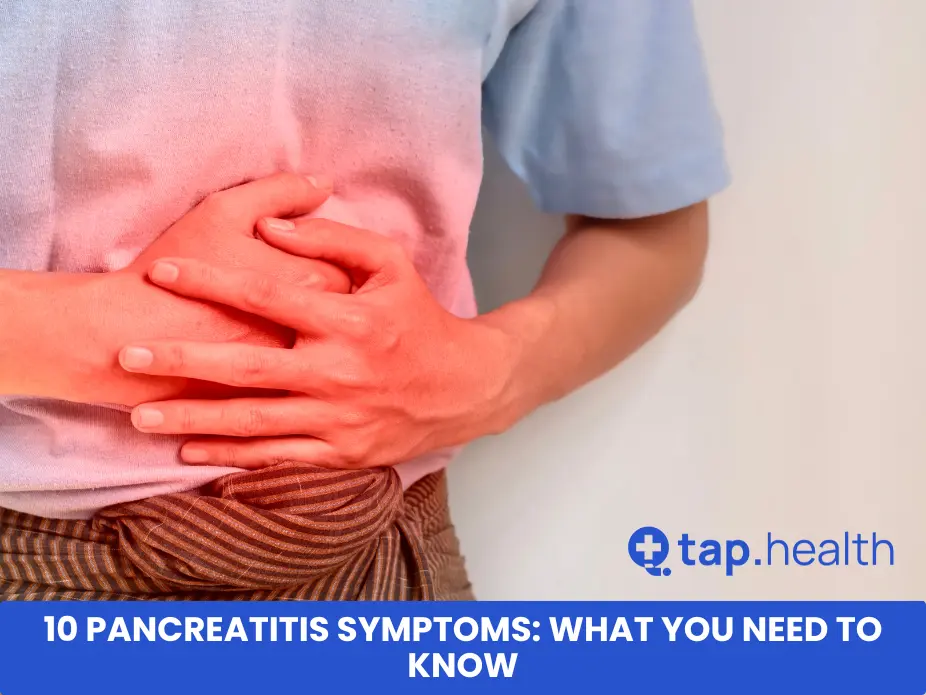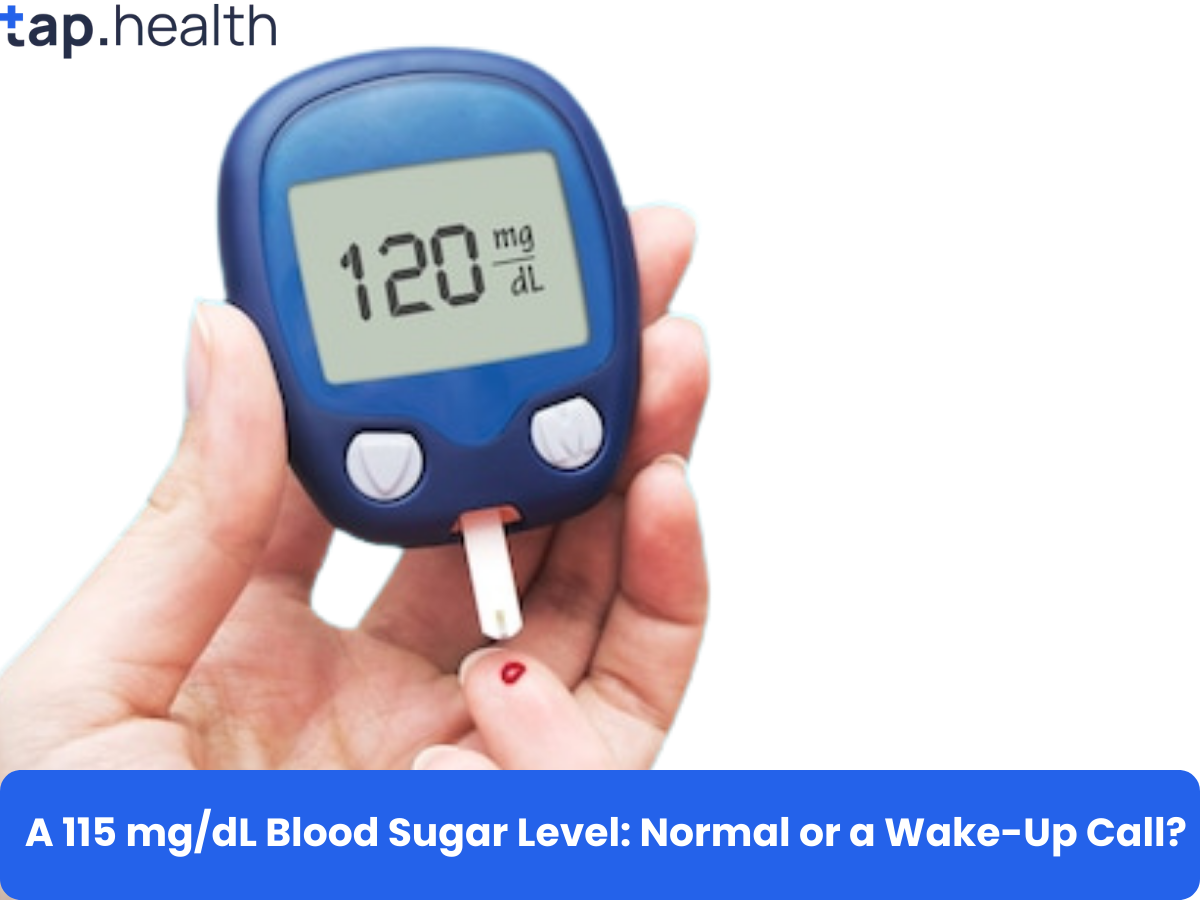Pancreatitis is a medical condition where the pancreas, a vital organ involved in digestion and blood sugar regulation, becomes inflamed. This inflammation can cause a range of symptoms, from mild discomfort to severe, life-threatening conditions. Understanding the symptoms, causes, types, and treatments of pancreatitis is crucial for managing this disease effectively. This comprehensive guide will delve into each aspect of pancreatitis, providing detailed information to help you recognize, treat, and prevent this condition.
What is Pancreatitis?
Pancreatitis is an inflammation of the pancreas, a crucial gland located behind the stomach that plays a vital role in digestion and blood sugar regulation. The pancreas produces enzymes that help digest food in the small intestine and hormones like insulin that help control blood sugar levels. When the pancreas becomes inflamed, these functions can be disrupted, leading to various health issues.
Pancreatitis can be acute or chronic. Acute pancreatitis appears suddenly and can be severe, often requiring hospitalization. Chronic pancreatitis develops over time and can lead to permanent damage to the pancreas. Understanding pancreatitis is essential for recognizing symptoms early and seeking appropriate treatment.
Types of Pancreatitis
Acute Pancreatitis
Acute pancreatitis occurs suddenly and lasts for a short period. It can range from mild discomfort to a severe, life-threatening illness. The majority of acute pancreatitis cases are mild and patients recover fully with appropriate treatment. However, severe cases can lead to complications such as pancreatic necrosis (death of pancreatic tissue), infection, and organ failure.
Chronic Pancreatitis
Chronic pancreatitis is a long-lasting inflammation that occurs over many years. It can result from repeated episodes of acute pancreatitis or develop on its own. Chronic pancreatitis leads to permanent damage to the pancreas, affecting its ability to function properly. This can result in ongoing pain, digestive problems, and diabetes. Unlike acute pancreatitis, chronic pancreatitis often requires long-term management to control symptoms and prevent complications.
10 Pancreatitis Symptoms
Recognizing the symptoms of pancreatitis early is crucial for timely treatment. Here are ten common symptoms associated with pancreatitis:
1. Upper Abdominal Pain
This is the most common symptom of both acute and chronic pancreatitis. The pain usually occurs in the upper abdomen and may radiate to the back. It can be severe and persistent, often described as a burning or stabbing sensation. The pain is typically worse after eating, especially fatty meals.
2. Swollen and Tender Abdomen
Inflammation of the pancreas can cause the abdomen to become swollen and tender to touch. This swelling can be uncomfortable and may be accompanied by bloating.
3. Nausea and Vomiting
Pancreatitis can lead to persistent nausea and frequent vomiting. These symptoms can make it difficult to keep food down, contributing to weight loss and dehydration.
4. Fever
A fever may develop as the body’s response to inflammation or infection in the pancreas. The presence of a fever, along with abdominal pain, suggests a more severe form of pancreatitis.
5. Rapid Pulse
Inflammation and pain can cause an increase in heart rate. A rapid pulse is often a sign that the body is under stress due to the inflammation.
6. Unintended Weight Loss
Difficulty digesting food properly can lead to unintended weight loss. This is more common in chronic pancreatitis, where the pancreas is unable to produce enough enzymes for digestion.
7. Fatty Stools (Steatorrhea)
Pancreatitis can cause malabsorption of fats, leading to oily, smelly stools that may float. This condition is known as steatorrhea and is more common in chronic pancreatitis.
8. Indigestion
Difficulty digesting food can result in indigestion, leading to discomfort, gas, and bloating. This symptom can persist even after making dietary changes.
9. Jaundice
If the bile duct is blocked due to inflammation or a gallstone, bile can accumulate in the bloodstream, causing yellowing of the skin and eyes. This condition is known as jaundice.
10. Diarrhea
Frequent, loose, watery stools can occur due to malabsorption of nutrients. Diarrhea is a common symptom in both acute and chronic pancreatitis and can lead to dehydration.
Causes of Pancreatitis
Pancreatitis can result from various factors, including lifestyle choices, medical conditions, and genetic predispositions. Understanding these causes can help in prevention and management.
1. Gallstones
Gallstones are small, hard deposits that form in the gallbladder. They can block the bile duct, leading to inflammation of the pancreas. Gallstones are a leading cause of acute pancreatitis, especially in women and individuals over the age of 40.
2. Chronic Alcohol Use
Heavy alcohol consumption is a major risk factor for both acute and chronic pancreatitis. Alcohol can cause the pancreas to produce toxic substances that damage its cells, leading to inflammation. Chronic alcohol use is one of the most common causes of chronic pancreatitis.
3. Certain Medications
Some medications can trigger pancreatitis as a side effect. These include certain antibiotics, diuretics, and medications used to treat high blood pressure. Always discuss potential side effects with your healthcare provider.
4. High Triglycerides
Elevated levels of triglycerides (a type of fat) in the blood can cause inflammation of the pancreas. This condition is known as hypertriglyceridemia and is a significant risk factor for acute pancreatitis.
5. Genetic Disorders
Genetic conditions such as cystic fibrosis can increase the risk of pancreatitis. Mutations in certain genes can affect the function of the pancreas, leading to inflammation and damage.
6. Abdominal Injury
Trauma to the abdomen, such as from an accident or surgery, can damage the pancreas and lead to pancreatitis. Abdominal injuries can cause sudden inflammation or exacerbate existing conditions.
7. Infections
Certain viral or bacterial infections can cause pancreatitis. For example, mumps and hepatitis viruses have been linked to pancreatic inflammation. Infections should be treated promptly to prevent complications.
8. Autoimmune Diseases
Autoimmune pancreatitis occurs when the body’s immune system mistakenly attacks the pancreas. This type of pancreatitis is rare but can lead to chronic inflammation and damage.
9. Pancreatic Cancer
Pancreatic tumors can cause blockages in the pancreatic ducts, leading to inflammation and pancreatitis. Pancreatic cancer is a serious condition that requires immediate medical attention.
10. Smoking
Smoking is a risk factor for both acute and chronic pancreatitis. The harmful chemicals in tobacco can damage pancreatic cells and increase inflammation. Quitting smoking can significantly reduce the risk.
What Does the Pain of Pancreatitis Feel Like?
The pain associated with pancreatitis is often described as severe and unrelenting. It typically starts in the upper abdomen and can radiate to the back. The pain may come on suddenly and can last for several days in the case of acute pancreatitis. For chronic pancreatitis, the pain can be ongoing and debilitating, sometimes becoming less intense but persistent over time.
Pancreatitis pain is usually worse after eating, particularly fatty foods, and can be accompanied by nausea and vomiting. Lying down often exacerbates the pain, while sitting up or leaning forward might provide some relief. The intensity of the pain can vary, but it is often severe enough to require medical intervention.
Risk Factors of Pancreatitis
Several factors can increase the risk of developing pancreatitis:
1. Heavy Alcohol Use
Chronic heavy drinking is one of the most significant risk factors for pancreatitis. Alcohol abuse can lead to repeated episodes of acute pancreatitis, which can progress to chronic pancreatitis over time. Limiting alcohol intake is crucial for reducing the risk.
2. Gallstones
Gallstones are a common cause of acute pancreatitis. They can block the bile duct, leading to inflammation of the pancreas. Maintaining a healthy diet and weight can help prevent gallstones.
3. Obesity
Obesity increases the risk of gallstones and pancreatitis. Maintaining a healthy weight through diet and exercise can reduce this risk.
4. Family History
A family history of pancreatitis or genetic disorders affecting the pancreas can increase the risk. Individuals with a genetic predisposition should discuss preventive measures with their healthcare provider.
5. Smoking
Smoking doubles the risk of developing pancreatitis. The harmful chemicals in tobacco can damage the pancreas and increase inflammation. Quitting smoking is one of the most effective ways to reduce the risk.
6. Diabetes
Diabetes is linked to chronic pancreatitis. High blood sugar levels can damage the pancreas over time. Managing diabetes through diet, exercise, and medication is essential.
7. High Fat Diet
A diet high in fats can lead to high triglycerides, increasing the risk of pancreatitis. Eating a balanced diet with healthy fats can help maintain normal triglyceride levels.
8. Certain Medications
Some medications, including certain antibiotics, diuretics, and medications for high blood pressure, can increase the risk of pancreatitis. Always discuss potential side effects with your healthcare provider.
9. Infections
Certain viral infections, such as mumps and hepatitis, can lead to pancreatitis. Vaccinations and prompt treatment of infections can reduce this risk.
10. Surgery or Trauma
Recent abdominal surgery or trauma can increase the risk of pancreatitis. Proper post-operative care and avoiding abdominal injuries can help prevent this.
Diagnosis of Pancreatitis
Diagnosing pancreatitis involves several steps to confirm the condition and determine its severity:
1.Medical History and Physical Exam
The doctor will take a detailed medical history and perform a physical exam. They will ask about symptoms, medical history, and any potential risk factors. During the physical exam, the doctor will check for tenderness in the abdomen and signs of jaundice.
2.Blood Tests
Blood tests are used to check for elevated levels of pancreatic enzymes, such as amylase and lipase, which indicate inflammation. Blood tests can also check for signs of infection, elevated blood sugar levels, and other markers of pancreatitis.
3.Imaging Tests
Imaging tests help visualize the pancreas and detect any abnormalities. Common imaging tests include:
- CT Scan (Computed Tomography): Provides detailed images of the pancreas and surrounding organs.
- MRI (Magnetic Resonance Imaging): Offers detailed images of the pancreas and ducts.
- Ultrasound: Uses sound waves to create images of the pancreas and detect gallstones.
4.Stool Tests
Stool tests are used to check for fat malabsorption, which is common in chronic pancreatitis. The presence of fatty stools (steatorrhea) indicates that the pancreas is not producing enough enzymes for digestion.
5.ERCP (Endoscopic Retrograde Cholangiopancreatography)
ERCP is a specialized procedure that combines endoscopy and X-ray to examine the pancreatic and bile ducts. It can diagnose and sometimes treat blockages or other issues in the ducts.
Treatment for Pancreatitis
Treatment for pancreatitis depends on the type and severity of the condition. The main goals are to relieve symptoms, prevent complications, and address the underlying cause.
1.Hospitalization
Severe cases of acute pancreatitis often require hospitalization. Treatment in the hospital may include:
- IV Fluids: To prevent dehydration and maintain blood pressure.
- Pain Medications: To manage severe pain.
- Nutritional Support: In severe cases, patients may need to fast to allow the pancreas to heal. Nutritional support may be provided through a feeding tube.
2.Fasting
In mild cases, fasting for a few days can give the pancreas time to recover. During this period, patients may receive IV fluids to stay hydrated. Gradually, they will be allowed to reintroduce clear liquids and then solid foods.
3.Treating Underlying Causes
Addressing the underlying cause of pancreatitis is crucial for preventing future episodes. This may involve:
- Gallstone Removal: If gallstones are causing the pancreatitis, they may need to be removed surgically or through ERCP.
- Managing Triglycerides: Medications and dietary changes can help lower high triglyceride levels.
- Adjusting Medications: If certain medications are causing pancreatitis, the doctor may adjust the dosage or prescribe alternatives.
4.Enzyme Supplements
In chronic pancreatitis, the pancreas may not produce enough enzymes for digestion. Pancreatic enzyme supplements can help improve digestion and reduce symptoms like fatty stools and weight loss.
5.Surgery
In severe cases, surgery may be necessary to remove blockages, drain fluid collections, or remove damaged tissue. Surgical options include:
- Pancreatectomy: Removal of part or all of the pancreas.
- Whipple Procedure: A complex surgery to remove part of the pancreas, bile duct, and small intestine.
6.Lifestyle Changes
Making lifestyle changes can help manage pancreatitis and prevent future episodes:
- Quit Alcohol: Avoiding alcohol can significantly reduce the risk of recurrent pancreatitis.
- Quit Smoking: Quitting smoking reduces the risk of pancreatitis and other health problems.
- Healthy Diet: Eating a balanced diet low in fat and high in fruits, vegetables, and whole grains can improve overall health and reduce the risk of pancreatitis.
- Regular Exercise: Physical activity helps maintain a healthy weight and reduce the risk of pancreatitis.
How Can I Prevent Pancreatitis?
Preventing pancreatitis involves making healthy lifestyle choices and managing underlying medical conditions. Here are some tips for prevention:
1.Limit Alcohol
Reducing or eliminating alcohol consumption is one of the most effective ways to prevent pancreatitis. Even moderate alcohol consumption can increase the risk, so it is best to limit intake.
2.Quit Smoking
Smoking cessation significantly lowers the risk of pancreatitis. There are various resources available to help quit smoking, including counseling, medications, and support groups.
3.Healthy Diet
Eating a balanced diet that is low in fat and high in fruits, vegetables, and whole grains can help maintain a healthy weight and reduce the risk of pancreatitis. Avoiding fatty and fried foods is particularly important.
4.Maintain Healthy Weight
Obesity increases the risk of gallstones and pancreatitis. Maintaining a healthy weight through diet and exercise can reduce this risk.
5.Exercise Regularly
Regular physical activity helps control weight and triglyceride levels, reducing the risk of pancreatitis. Aim for at least 30 minutes of moderate exercise most days of the week.
6.Manage Medical Conditions
Controlling conditions like diabetes and high triglycerides can reduce the risk of pancreatitis. Follow your healthcare provider’s recommendations for managing these conditions through diet, exercise, and medication.
7.Avoid Certain Medications
Some medications can increase the risk of pancreatitis. Discuss all medications with your healthcare provider and only take those that are necessary and approved.
8.Vaccinations
Certain infections can lead to pancreatitis. Keeping up to date with vaccinations, such as for mumps and hepatitis, can help prevent these infections.
9.Post-Operative Care
Proper care after abdominal surgery or trauma can help prevent pancreatitis. Follow your healthcare provider’s instructions for recovery and avoid activities that could injure the abdomen.
When to See a Doctor
It is important to seek medical attention if you experience any symptoms of pancreatitis, especially if they are severe or persistent. Here are some signs that you should see a doctor:
- Severe Abdominal Pain: If you experience sudden, severe pain in the upper abdomen that radiates to your back, seek medical attention immediately.
- Persistent Nausea and Vomiting: If you cannot keep food down and are vomiting frequently, see a doctor.
- Unintended Weight Loss: If you are losing weight without trying, especially if you have other symptoms of pancreatitis, seek medical advice.
- Jaundice: Yellowing of the skin and eyes can indicate a blockage in the bile duct, which requires prompt medical attention.
- Fever and Rapid Heartbeat: If you have a fever and a rapid pulse along with abdominal pain, see a doctor as these can be signs of a severe infection or inflammation.
- Symptoms Persist Despite Treatment: If you are already diagnosed with pancreatitis and your symptoms do not improve with treatment, seek further medical advice.
Early intervention can prevent complications and improve outcomes. Do not ignore symptoms or delay seeking medical care.
FAQ on Pancreatitis Symptoms
Q: Can pancreatitis be cured?
A: Acute pancreatitis can often be treated successfully, and most people recover fully. Chronic pancreatitis requires ongoing management to control symptoms and prevent complications, but it cannot be completely cured.
Q: How long does pancreatitis pain last?
A: Pain from acute pancreatitis can last a few days to weeks, depending on the severity. Chronic pancreatitis pain can be ongoing, with periods of flare-ups and remission.
Q: Can diet cause pancreatitis?
A: A high-fat diet can increase the risk of pancreatitis, especially if combined with other risk factors like alcohol use and obesity. Eating a balanced diet low in fat can help reduce the risk.
Q: Is pancreatitis life-threatening?
A: Severe cases of pancreatitis can be life-threatening and require immediate medical attention. Early diagnosis and treatment are crucial for preventing complications and improving outcomes.
Q: Can children get pancreatitis?
A: Yes, children can develop pancreatitis, although it is less common. Causes in children can include infections, trauma, genetic conditions, and certain medications.
Q: What are the long-term effects of chronic pancreatitis?
A: Chronic pancreatitis can lead to permanent damage to the pancreas, resulting in ongoing pain, digestive problems, and diabetes. Long-term management is required to control symptoms and prevent complications.
Q: Can pancreatitis cause diabetes?
A: Yes, chronic pancreatitis can damage the insulin-producing cells in the pancreas, leading to diabetes. This condition is known as pancreatogenic diabetes.
Q: What foods should I avoid with pancreatitis?
A: It is best to avoid fatty and fried foods, alcohol, caffeine, and spicy foods. Eating a low-fat diet with plenty of fruits, vegetables, and whole grains can help manage symptoms and reduce the risk of flare-ups.
Q: How is pancreatitis diagnosed?
A: Pancreatitis is diagnosed through a combination of medical history, physical exam, blood tests, and imaging tests such as CT scans, MRIs, and ultrasounds.
Q: What are the common complications of pancreatitis?
A: Complications can include pancreatic necrosis, infection, pseudocysts, diabetes, malnutrition, and an increased risk of pancreatic cancer. Managing pancreatitis effectively can help prevent these complications.
By understanding pancreatitis symptoms, causes, risk factors, and treatment options, you can better manage this condition and seek help when needed. Always consult a healthcare professional for personalized advice and treatment plans.



